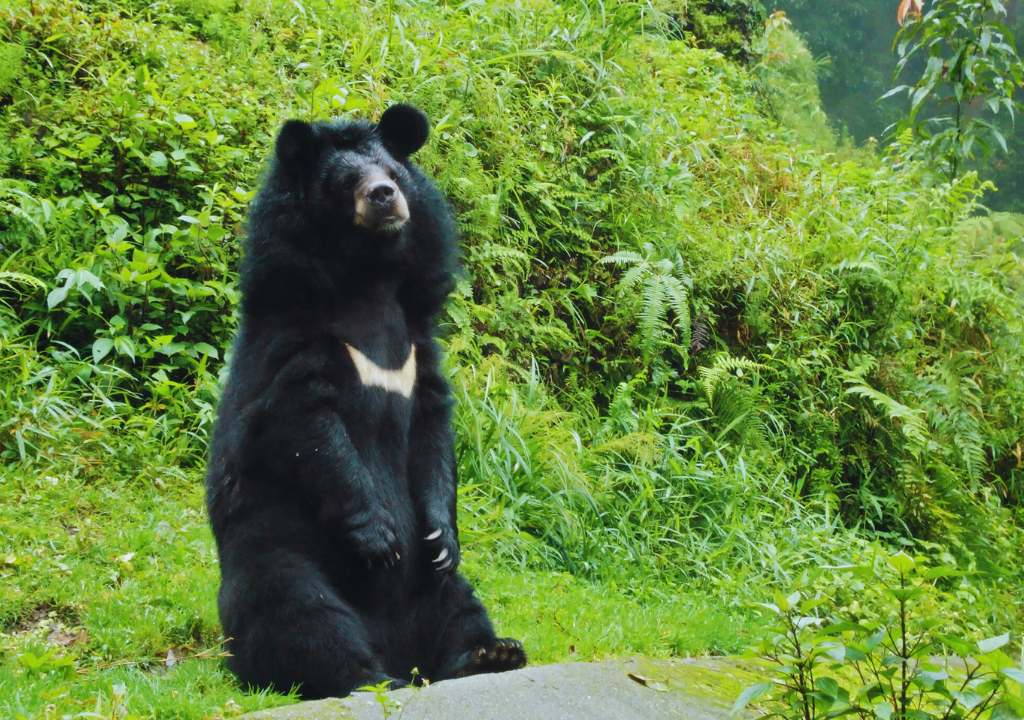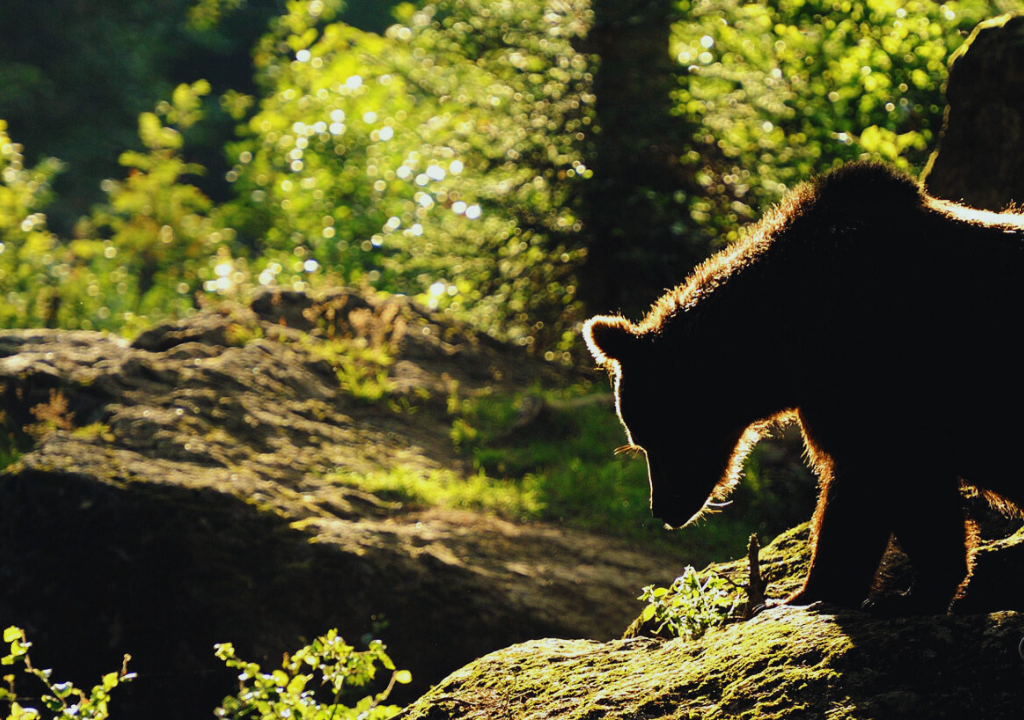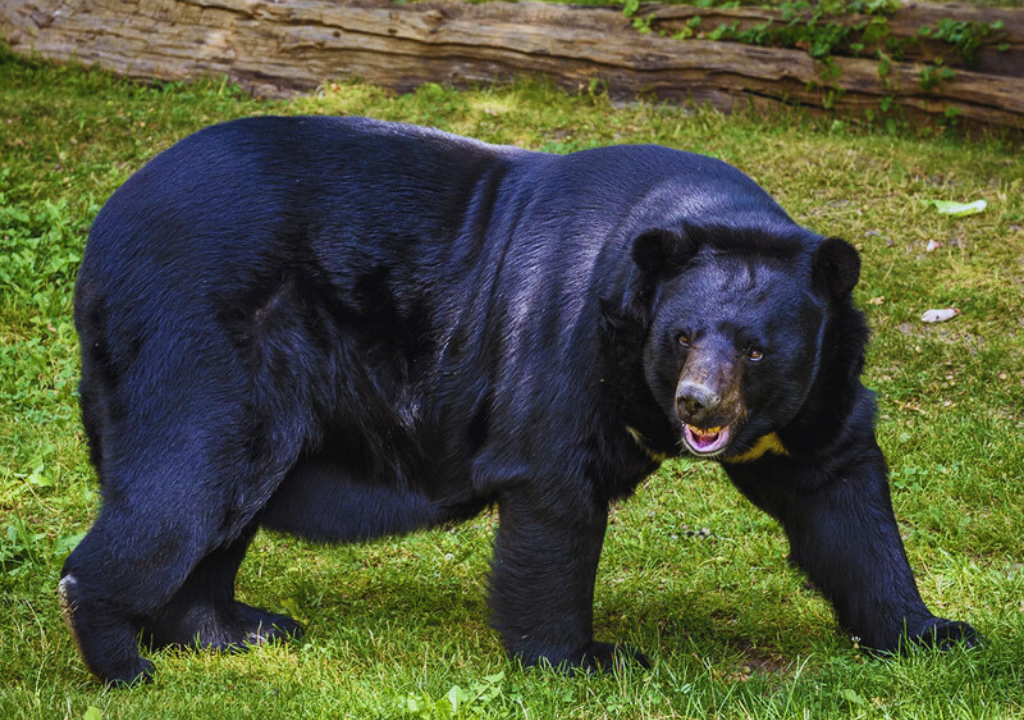“🐻 Discover the Majestic Bears of Rajaji! Explore their World in Rajaji National Park. Nature’s Marvels Await! 🌳🏞️ #RajajiBears”
Introduction: Discovering the Harmony of Bears and Biodiversity
Rajaji National Park in Uttarakhand, India, stands as a remarkable testament to the country’s rich biodiversity. Amidst the verdant landscapes and diverse ecosystems, an essential player in the intricate web of life thrives—the bear. These charismatic creatures, including the Himalayan Black Bear and the Sloth Bear, play a crucial role in maintaining the ecological equilibrium of this magnificent park.
The Role of Bears in the Ecosystem

Bears as Keystone Species Bears, often referred to as keystone species, wield a remarkable influence on their environment. Their activities, from foraging for food to shaping vegetation patterns, resonate through the ecosystem, impacting various plant and animal species.
Impact on Plant Regeneration The presence of bears contributes to plant regeneration. Their selective feeding habits encourage new growth by pruning specific plants, ensuring a diverse array of vegetation that sustains other herbivores and fosters biodiversity.
Species of Bears Found in Rajaji National Park
Nestled in the picturesque landscapes of Uttarakhand, Rajaji National Park is a treasure trove of biodiversity. Among its remarkable inhabitants, the park is home to two prominent bear species—the Himalayan Black Bear and the Sloth Bear. Let’s delve into the characteristics that make each of these species distinct and essential components of the park’s rich ecosystem.
Himalayan Black Bear: A Study in Contrasts

Distinctive Appearance The Himalayan Black Bear, with its lustrous black coat, creates a striking contrast against the vibrant green backdrop of the park. Its defining feature—a white V-shaped mark on its chest—sets it apart and aids in easy identification.
Versatility in Habitat This bear’s versatility knows no bounds. It effortlessly adapts to various elevations and terrains, from the dense forests to the alpine meadows that grace the park’s expanse.
Behavioral Traits Renowned for its agility, the Himalayan Black Bear is both a skillful climber and a proficient forager. Its acute sense of smell and broad chest aid in navigating its surroundings and procuring nourishment.
Sloth Bear: The Enigmatic Insectivore
Distinctive Appearance The Sloth Bear stands out with its shaggy coat and distinctively marked chest, adorned with a pale Y or V-shaped pattern. Its appearance exudes an air of mystique, capturing the curiosity of observers.
Insectivorous Lifestyle A true insectivore, the Sloth Bear’s diet is primarily composed of termites and ants. Its long, flexible snout and strong claws serve as specialized tools for extracting insects from their nests.
Behavioral Adaptations The Sloth Bear’s elusive behavior sets it apart. Often avoiding human encounters, it showcases an intriguing behavior called “bluff charging,” where it stands on its hind legs to intimidate potential threats.
Behavior and Habitat of Bears
Nocturnal Activities Both Himalayan Black Bears and Sloth Bears exhibit nocturnal behavior. Their activity peaks during the night, allowing them to avoid human disturbances and thrive in their natural rhythm.
Hibernation Patterns Sloth Bears are known to undergo a unique form of hibernation, called “torpor.” This energy-saving state allows them to conserve energy during periods of food scarcity, showcasing their remarkable adaptations.
Human-Bear Interactions
Potential for Conflict The proximity of human settlements to bear habitats raises concerns about potential conflicts. As bears venture closer to human areas in search of food, instances of crop damage and human-bear interactions can arise.
Strategies for Coexistence Balancing the needs of local communities and the conservation of bears demands thoughtful solutions. Implementing deterrents, creating buffer zones, and fostering public awareness are essential components of mitigating conflicts.
Conservation Efforts for Bear Species
Research and Monitoring Ongoing research and monitoring initiatives provide insights into bear behavior, habitat utilization, and population dynamics. This knowledge forms the foundation for effective conservation strategies.
Habitat Protection Preserving bear habitats is pivotal for their survival. Collaborative efforts involving government agencies, conservation organizations, and local communities ensure that these habitats remain intact.
Bears and Ecotourism

Responsible Wildlife Viewing Ecotourism presents an avenue to observe bears in their natural habitat while contributing to their conservation. Responsible wildlife viewing practices respect their space and minimize disturbance.
Economic Benefits for Local Communities The presence of bears attracts eco-tourists, providing economic opportunities for local communities. These benefits incentivize conservation efforts and highlight the value of intact ecosystems.
Challenges to Bear Conservation
Habitat Fragmentation Rapid urbanization fragments bear habitats, impacting their movement and access to resources. Addressing habitat fragmentation requires holistic approaches that consider connectivity.
Poaching and Illegal Wildlife Trade Poaching and illegal trade pose significant threats to bear populations. Strengthening anti-poaching measures and raising awareness about the consequences of these activities is crucial.
Success Stories and Positive Impact
Rajaji National Park in Uttarakhand, India, is a beacon of successful conservation efforts. This park has witnessed inspiring stories that highlight positive impacts, demonstrating the transformative potential of dedicated conservation.
Reintroduction of Gharials: Species Reclaimed
From Precarious to Promising Rajaji National Park tackled the decline of critically endangered Gharials through a focused rehabilitation program, successfully reintroducing them to their natural habitat.
Striped Hyena Conservation: A Turnaround Tale
Reviving a Declining Species By mitigating conflicts and raising awareness, the park revived Striped Hyena populations, showcasing the park’s commitment to coexistence and ecological balance.
Wildlife Corridor Establishment: Connecting Habitats
Uniting Fragmented Lands Through dedicated efforts, wildlife corridors were established, allowing seamless movement for species and mitigating the challenges of habitat fragmentation.
Conclusion
In Rajaji National Park, the harmony of nature relies on the presence of bears as essential cogs in the ecosystem machinery. The conservation of these magnificent creatures isn’t just about protecting a species—it’s about safeguarding the intricate balance that sustains life. By adopting strategies for responsible coexistence and advocating for their protection, we can ensure that future generations continue to share this mesmerizing wilderness with the bears that call it home.
FAQs
1. Are bear encounters common in Rajaji National Park?
While bear encounters are not uncommon, they are usually avoidable through responsible wildlife viewing practices and maintaining a safe distance.
2. How can visitors contribute to bear conservation?
Visitors can support bear conservation by adhering to park guidelines, not feeding bears, and spreading awareness about the importance of these animals.
3. What measures are in place to prevent human-bear conflicts?
Park authorities implement strategies such as creating buffer zones, using deterrents, and educating local communities to minimize human-bear conflicts.
4. Can I see bears during a wildlife tour in the park?
While bear sightings are not guaranteed, guided wildlife tours offer the best chances of observing bears in their natural habitat.
5. How can I learn more about bear conservation efforts in Rajaji National Park?
You can find information on bear conservation initiatives through park websites, conservation organizations, and visitor centers within the park.

